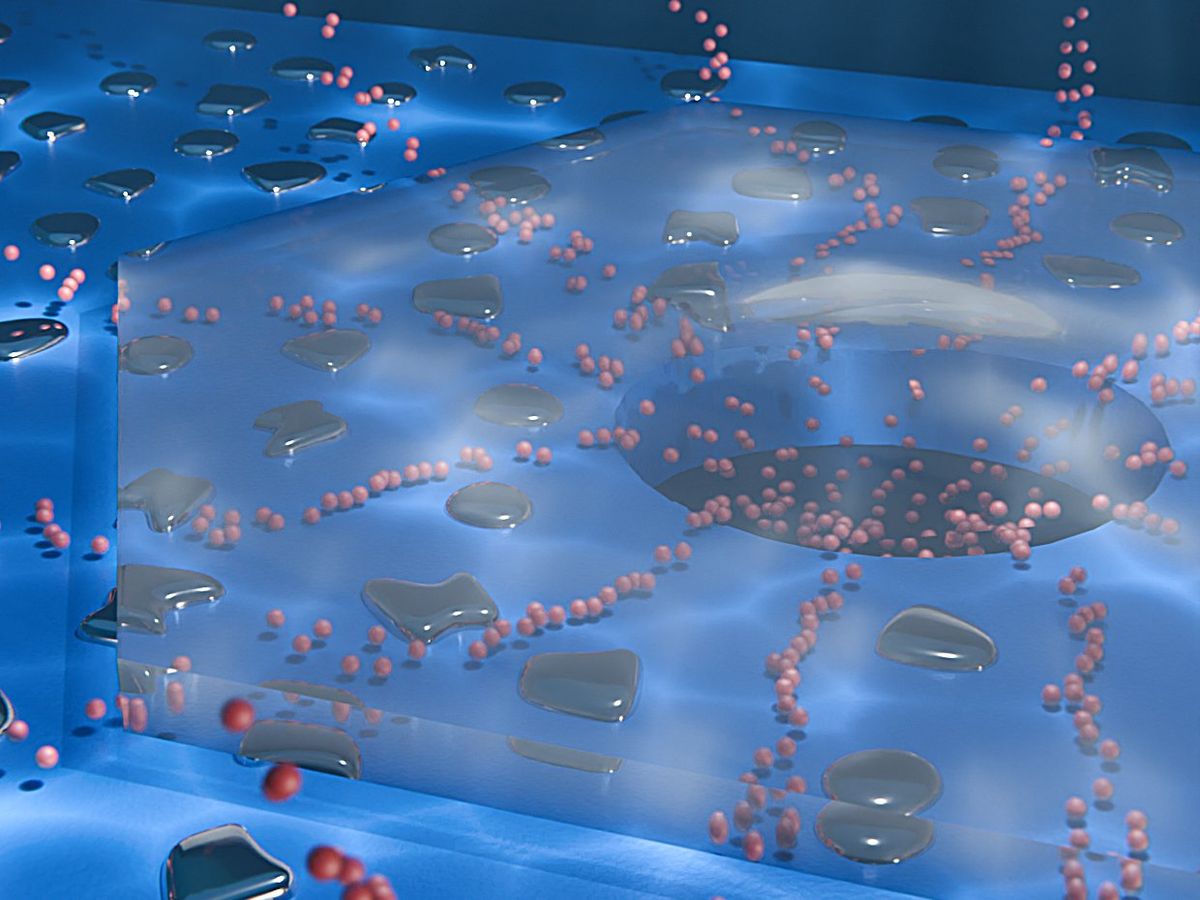Liquid circuits that mimic synapses in the brain can for the first time perform the kind of logical operations underlying modern computers, a new study finds. Near-term applications for these devices may include tasks such as image recognition, as well as the kinds of calculations underlying most artificial intelligence systems.
Just as biological neurons both compute and store data, brain-imitating neuromorphic technology often combines both operations. These devices may greatly reduce the energy and time lost in conventional microchips shuttling data back and forth between processors and memory. They may also prove ideal for implementing neural networks—AI systems increasingly finding use in applications such as analyzing medical scans and controlling autonomous vehicles.
“The human brain operates at only 20 watts, orders of magnitude lower than computers that can perform complex tasks usually achieved by people.” —Théo Emmerich, Swiss Federal Institute of Technology in Lausanne, Switzerland
One strategy to develop neuromorphic computers involves memristors, or memory resistors. Memristors and similar devices are essentially switches that can remember which electric state they were toggled to after their power is turned off. As such, memristive devices resemble the synapses linking neurons, whose electrical conductivity strengthens or weakens depending on a number of biophysical factors, including how much electrical charge has passed through them in the past.
Conventional memristors, like regular computers, operate by shifting electrons around. In the new study, researchers at the Swiss Federal Institute of Technology in Lausanne (EPFL) in Switzerland experimented with fluidic memristive devices that instead rely on shuffling around ions to more closely mimic how the brain operates.
A key advantage of using ions instead of electrons may be extreme energy efficiency. “The human brain operates at only 20 watts, orders of magnitude lower than computers that can perform complex tasks usually achieved by people,” says Théo Emmerich, a postdoctoral researcher at EPFL.
In addition, says Yunfei Teng, a doctoral assistant at Lausanne, the brain’s neural networks contain “many different kinds of ions, with different charges and chemical properties.” To name just four, potassium, sodium, magnesium, and calcium are crucial for brain’s information processing capacity. Fluidic memristors could similarly manipulate several ion types in order to broaden a circuit’s electronic capabilities.
How to make a liquid neural net
In the new study, the scientists began with a silicon chip that had a square membrane of silicon nitride in the middle. In the center of this membrane was a single circular pore about 100 nanometers wide.
The researchers then added palladium and graphite layers onto the chip. Inside the palladium layer was a network of channels each only a few nanometers wide. A watery solution loaded with potassium ions was then fed into the chip.
“In the long run, our goal is to build computers that work with liquid electrolytes just like living organisms do.” —Aleksandra Radenovic, Swiss Federal Institute of Technology in Lausanne, Switzerland
When a positive voltage was applied to the chip, the ions flowed to the pore, where their pressure created a blister between the chip’s surface and the graphite layer. When the blister forced the graphite upward, the device became more conductive, switching its memory state to “on.” Since the graphite stayed lifted even without a current, the chip essentially remembered this state, A negative voltage could pull the chip’s layers back together, resetting the device to its “off” state.
The scientists were able to connect two of these chips to form a logic gate—a circuit that can implement logical operations such as AND, OR, and NOT. They note they can build any other classical logic gate commonly employed in digital computing using their logic gate. This is the first time multiple fluidic memristors have been connected to form a circuit.
Previously, scientists developed fluidic memristors based on tiny syringes or microscopic slits. However, these earlier devices were too bulky and complex to scale up to larger systems. In contrast, the new microchips are compact and scalable, Emmerich says.
The scientists note one downside to their approach: It currently takes about two seconds to set or reset each device. In comparison, solid-state memristive devices switch at microsecond timescales. Still, they add there is plenty of room to improve the performance of their device, such as by optimizing its membrane’s size and stiffness, or to alter the surface charge and adhesion properties of the chip’s materials.
In the next five to 10 years, the researchers could use their device to “build small nanofluidic neural networks,” says Nathan Ronceray, a doctoral assistant at EPFL. Such primitive liquid computing systems could execute simple tasks such as image recognition. They could also perform matrix multiplication calculations, which are key to many computational tasks, including operating neural networks.
“In the long run, our goal is to build computers that work with liquid electrolytes just like living organisms do, which will be able to achieve the same tasks as their electron-based counterparts,” says Aleksandra Radenovic, a professor of life sciences engineering at EPFL.
The scientists detailed their findings this month in the journal Nature Electronics.
- New Memristor Circuit Mimics Synapses in the Brain - IEEE Spectrum ›
- A Low-Power Artificial Synapse Could One Day Interface With the ... ›
Charles Q. Choi is a science reporter who contributes regularly to IEEE Spectrum. He has written for Scientific American, The New York Times, Wired, and Science, among others.



